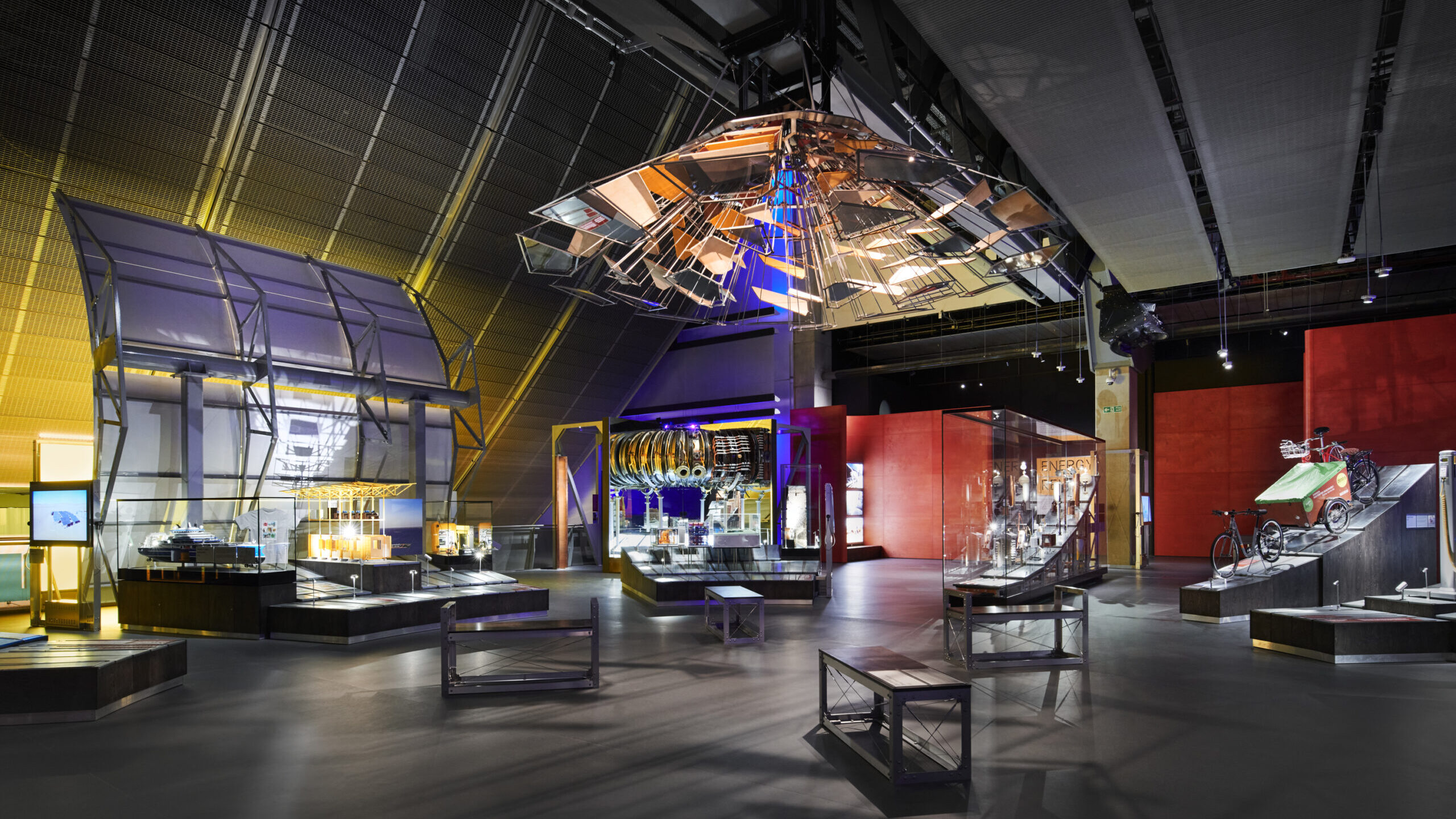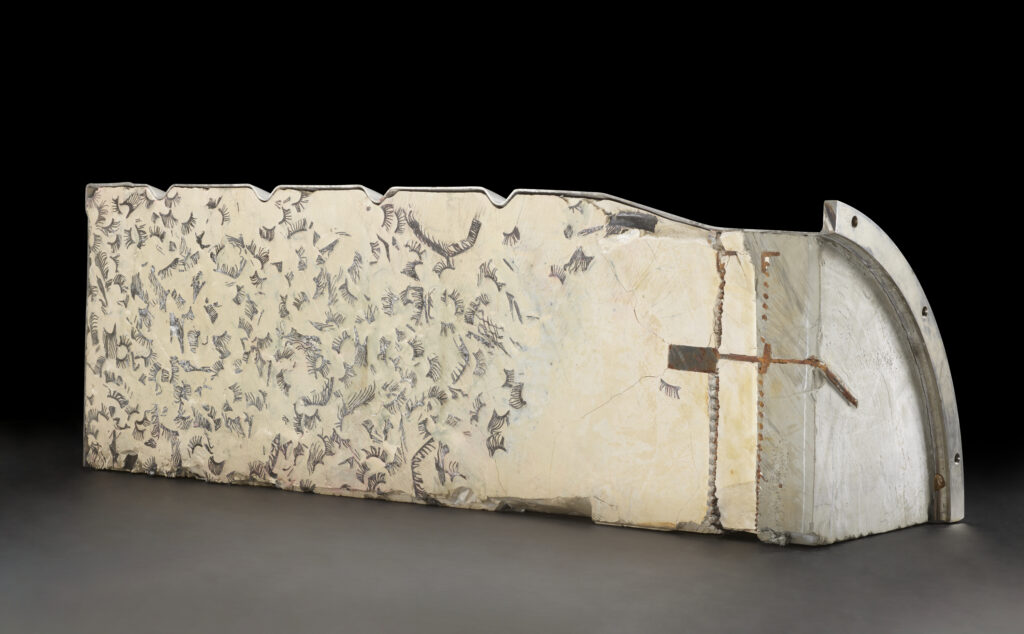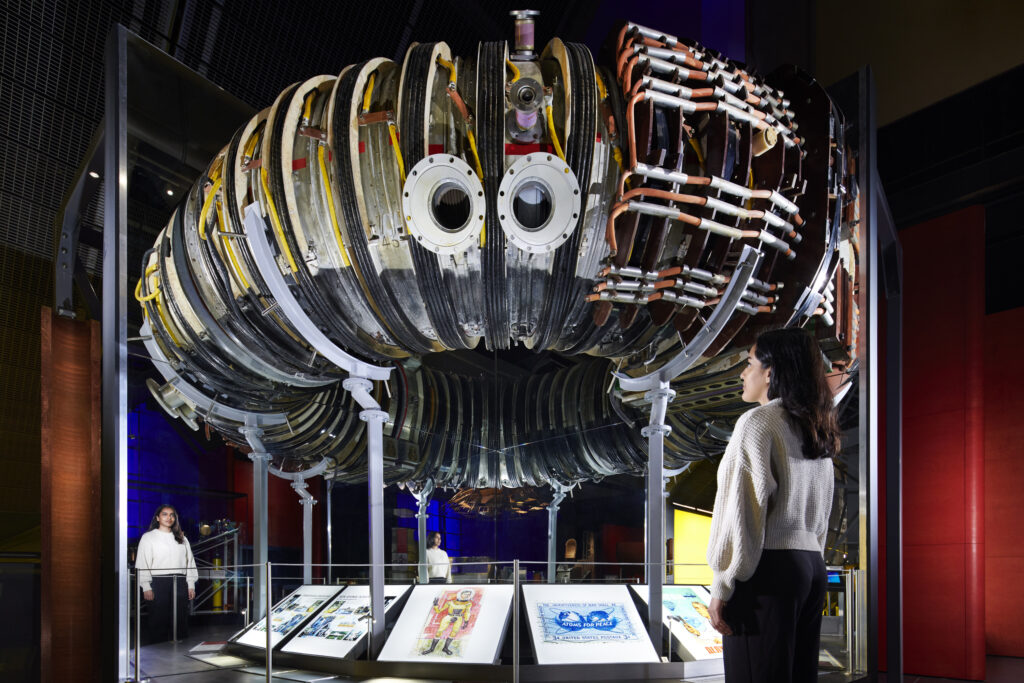Enjoy this article?
Most Museums Journal content is only available to members. Join the MA to get full access to the latest thinking and trends from across the sector, case studies and best practice advice.
I am one of those people who believes we are struggling for our lives regarding the climate crisis. And sometimes this struggle is hard and draining. New climate-related tragedies happen every day. “Climate or ecological grief” is now a thing – it has a Wikipedia page.
My fear has been that, however much I try as an individual, I can’t make enough of an effect to counteract the mass use of fossil fuels, plastics, forever chemicals and waste. It seems desperate. But the Science Museum’s new Adani Green Energy gallery has changed the game for me.
I had heard murmurings about sponsorship discomfort, with Adani Renewables front and centre in the gallery’s name. This is a subsidiary company within Adani Group, a coal conglomerate.
Whatever we think about this connection, the Adani Renewables arm does seem to be successful at building and developing renewables at a growing rate. Despite my own misgivings, I decided not to get distracted. After all, the gallery attracted more than 50,000 visitors in its first three weeks.
When I eventually found it – it’s so new that the wayfinding and staff knowledge is running to catch up – I realised it was called Energy Revolution and that the Adani Green Energy Gallery is a subtitle. This feels positive, presenting the possibility that we are on the cusp of a new revolution.
The gallery is broken up into sections with a large, specially commissioned kinetic artwork at its heart. Only Breath, by Alexandra Carr and Colin Rennie of Torus Torus Studios, is a calming experience based on the power of nature to inspire technological change – it’s a remedy for climate grief.
Spreading out from this is a large section on zero carbon energy sources: nuclear, solar, wind and water. The nuclear section explains the difference between fission (what we have mastered to create nuclear power) and fusion (what the sun does and we haven’t managed to replicate yet), demonstrating how this energy revolution goes as far back as the 1920s.

The Science Museum’s collection is used to show how nuclear fission produces nuclear waste, of which there is a large and terrifying sample on display. It is apparently inert, but still made me nervous, and is next to a bottle of liqueur made in Chernobyl, Ukraine, representing the nuclear disaster that took place there in 1986. Their juxtaposition made me wonder if we’re not quite owning up to the deadly downside of nuclear fission because it also offers low carbon emissions.
One of the most eye-catching pieces in the gallery is the massive arcing wave of solar panels opposite a large “sun”. I was enchanted by these. I had such a feeling of awe and warmth standing under them.
I could imagine the scale of vast fields of them in the arid landscapes shown in the interpretation. This technology is developing at speed and on a big scale, and it feels like a viable alternative to fossil fuels.
And then we’re on to Orkney, off Scotland’s coast, where we learn about the group of islands’ productive renewable initiatives, such as wind turbines on land, marine turbines in the sea, and tidal turbines under the sea.
Although the displays are expertly engineered from recycled shelving from the Science Museum’s now empty Blythe House store, they somehow miss the feeling of the wilds of Orkney.
The displays do, however, tell us that Orkney is generating such an excess of electricity that they’re using it to create a hydrogen hub for more sources of green energy and energy that can be stored.

“Could other regions also build their economies around hydrogen?” asks the interpretation. At the London Museum of Water and Steam, my own organisation, we’ve been exploring hydrogen-based energy systems for industrial heritage and are working with a group of rocket scientists. We’re trying to help make it happen.
All this is showcasing the possibilities for a new future, but the Energy Revolution gallery is looking at the energy revolutions of the past and present, hoping to inform the future – exactly what our heritage project sets out to do. And in case there’s a climate denier among you – the evidence is clear and the tools that got us here are on display.
Artefacts from the Science Museum’s collection include the first electric cab. And it isn’t from the 1990s, it was made 100 years earlier. If only we’d taken a different road back then.
Considering that this gallery is about the future there is a surprisingly small number of screens and interactives. I was especially excited to see a fun “analogue” interactive with a crank-handle and a big yellow button demonstrating how a gravity battery can be used to balance flow issues with renewables.
As a museum professional, I’ve recently been challenged on fun versus worthiness, as if they can’t exist at the same time. The Science Museum’s gallery shows that a cause as important as climate change can also be fun.
The London Museum of Water and Steam is just beginning its climate advocacy journey. With water at our core, we have a mandate to advocate for our planet’s blue resources and this gallery is an inspiration.

Positivity runs through the whole gallery at the Science Museum, but one of the most fun pieces is a display of children’s ideas for renewables or zero-carbon options.
My favourite was one that used volcanoes to cook pizza. With each child’s whacky concept, the curators then sourced appropriate field experts to illustrate how these could have real-life impact. And using the latent heat in the earth is already one of the major alternatives to gas boilers – so not far off.
My takeaway from this visit was a sense of optimism that I hadn’t expected. The gallery stays away from what we can do as individuals, which is refreshing.
One of my main frustrations is that most of the time, I can’t make the right choice because the infrastructure isn’t there. But this gallery made me feel hopeful that it is out there and that it is on the way.
Finally, I noticed a set of test tubes with diminishing sand in half of them. It represents carbon emissions in the UK from 2010; a tube for each year up to 2035. To see the sand reducing year-on-year at such a rate, made me hopeful for increasingly positive results as those years roll on.
The Science Museum expects the gallery to last 10 years, so, by the end of its run, let’s hope that last test tube is empty.
Hannah Harte is the museum director of London Museum of Water and Steam
Most Museums Journal content is only available to members. Join the MA to get full access to the latest thinking and trends from across the sector, case studies and best practice advice.